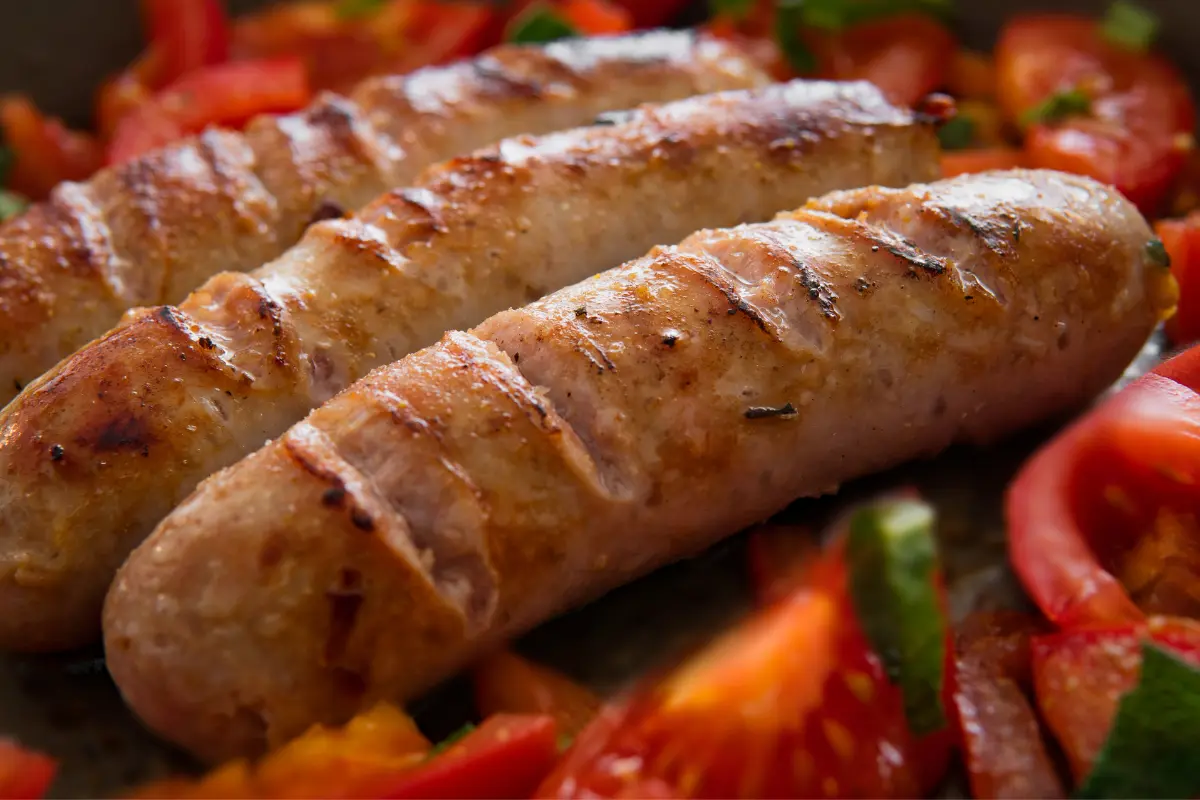When it comes to enjoying the robust flavors of summer sausage, understanding its shelf life and proper storage methods is key to preserving both its quality and safety. This comprehensive guide delves into the essential aspects of summer sausage, including its origins, key ingredients, and how it is made. We will also explore practical tips for storing summer sausage to maximize its shelf life and maintain its delightful flavors. Additionally, we’ll address common concerns regarding spoilage and how to spot it, ensuring you can enjoy your summer sausage with confidence. Whether you’re a culinary enthusiast eager to learn more about this versatile meat or someone looking to keep your pantry well-stocked, this guide offers valuable insights that will help you make the most of every slice. Join us as we uncover the secrets to keeping sausage delicious from the first bite to the last.
Understanding Summer Sausage: A Comprehensive Guide
What is Summer Sausage?
Summer sausage, a beloved staple in many households, is known for its rich flavors and convenient shelf-stable properties. Typically made from a combination of pork, beef, or venison, sausage is seasoned with a blend of spices and is one of the few shelf stable sausages, according to the USDA, including garlic, mustard seeds, and black pepper, which contribute to its unique taste and aroma. For a deeper dive into making and enjoying this versatile meat, check out our comprehensive guide on Summer Sausage: A Complete Guide to Making and Enjoying.
Historical Background of Summer Sausage
Historically, summer sausage was developed for its preservability. Its origins can be traced back to European farmers, who needed to store meat safely throughout the warmer months. The traditional process of curing meat with salt and smoke allowed them to keep the sausage without refrigeration, making it an ideal choice for the summer season.
Key Ingredients in Summer Sausage
The key to the distinctive flavor of summer sausage lies in its ingredients. Salt not only enhances taste but also acts as a preservative by inhibiting bacterial growth. Moreover, the inclusion of curing salts, specifically sodium nitrite, helps preserve the sausage’s color and prevents spoilage, ensuring the sausage remains safe to eat over time.
Production Process of Summer Sausage
The production of summer sausage involves a meticulous process of grinding, mixing, curing, and smoking. Initially, the meat is ground and mixed with spices and curing agents. Afterward, the mixture is stuffed into casings and left to cure, which can take several days. Finally, the sausage is slow-smoked over low heat, which imparts a smoky flavor and further extends its shelf life.
By understanding the basics of what summer sausage is, its historical significance, the essential ingredients used, and the production process, consumers can better appreciate the craftsmanship behind this popular food item. Now, let’s move on to explore how these factors influence the shelf life and how you can store your sausage to ensure it remains delicious for as long as possible.
How Long Does Summer Sausage Last?
Shelf Life of Unopened Summer Sausage
Unopened summer sausage is a marvel of food preservation, capable of lasting for several months under the right conditions. Typically, when stored in a cool, dry place, an unopened summer sausage can remain good for up to six months. However, it’s important to check the product’s packaging for specific storage instructions and expiration dates to ensure optimal freshness.
Shelf Life After Opening
Once opened, the shelf life of summer sausage significantly decreases due to exposure to air and moisture. To maximize freshness, an opened sausage should be consumed within three weeks. Storing it in the refrigerator wrapped tightly in plastic wrap or aluminum foil can help maintain its quality and prevent spoilage.
Factors Influencing Shelf Life
Several factors affect how long summer sausage lasts. For a detailed breakdown of sausage storage safety, refer to the USDA guidelines on sausages and food safety. Firstly, the type of meat used can influence its longevity; sausages made with higher fat content may spoil faster. Additionally, the environment plays a crucial role; summer sausage stored at room temperature will have a shorter shelf life compared to those kept in cooler conditions. Moreover, exposure to light and air can accelerate spoilage, making proper storage essential.
By understanding these key aspects, you can ensure that your sausage remains delicious and safe to consume. Next, we’ll delve into the best practices for storing sausage to further extend its life and maintain its quality.
Best Practices for Storing Summer Sausage
Optimal Storage Conditions
To preserve the quality and extend the life of your summer sausage, it is critical to maintain optimal storage conditions. The ideal location is cool, dark, and dry—think of a pantry or a cellar. These conditions help to prevent the growth of bacteria and maintain the sausage’s flavor and texture. Here’s a quick-reference table summarizing the shelf life and storage tips for summer sausage:
| Type | Shelf Life | Storage Tips |
|---|---|---|
| Unopened Summer Sausage | Up to 6 months | Store in a cool, dry place |
| Opened Summer Sausage | 3 weeks in the fridge | Keep wrapped tightly in the fridge |
| Frozen Summer Sausage | Up to 2 months | Wrap tightly in freezer-safe materials |
| Signs of Spoilage | — | Odd odor, slimy texture, discoloration |
Refrigeration vs. Freezing
For long-term storage, refrigeration is essential. When kept in the refrigerator, summer sausage can maintain its quality for up to three weeks after opening. If you need to store it for a longer period, freezing is an excellent option. Sausage can be frozen for up to two months without significant loss of flavor or texture. To freeze, wrap the sausage tightly in freezer-safe plastic wrap or aluminum foil and place it in a freezer bag to prevent freezer burn.
Tips for Extending Shelf Life
Here are some practical tips to help you extend the shelf life of your summer sausage:
- Keep it Wrapped: Always rewrap summer sausage tightly after use to minimize exposure to air.
- Use Airtight Containers: Store it in airtight containers or vacuum-seal it to further protect against air and moisture.
- Regular Checks: Regularly check your sausage for any signs of spoilage, such as discoloration or an off smell.
By following these storage techniques, you can ensure that your sausage stays fresh and delicious for as long as possible, reducing food waste and preserving the delightful flavors that make it so popular. In the next section, we will explore the health and safety considerations to keep in mind when consuming sausage to ensure it remains a safe and enjoyable part of your meals.


